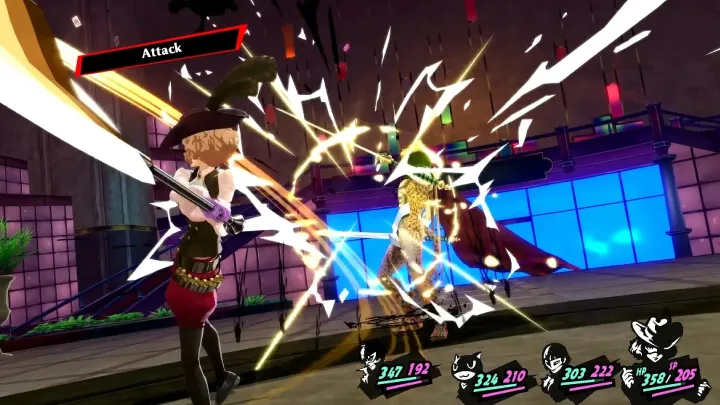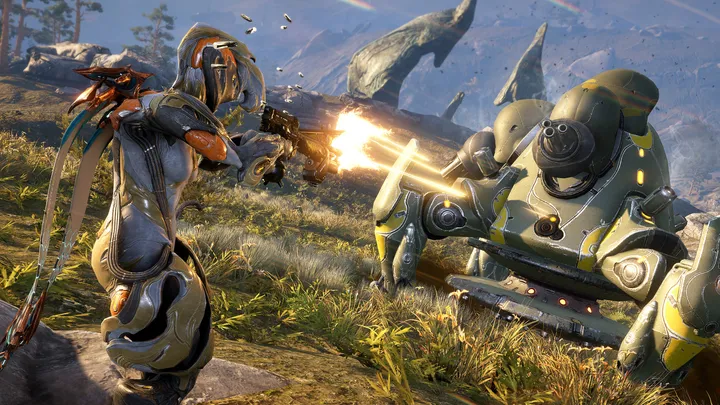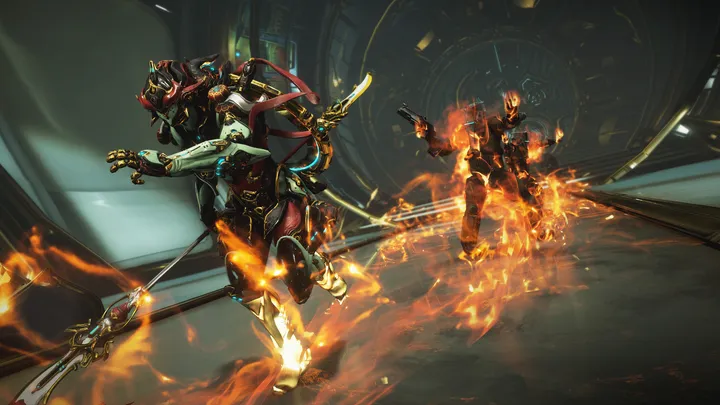
Introduction
Persona 5 Royal, an enhanced version of the acclaimed JRPG Persona 5, expands on the original's engaging storyline and vibrant characters. Set in modern-day Tokyo, the game follows a group of high school students known as the Phantom Thieves as they attempt to change the hearts of corrupt individuals through a metaphysical realm. While the game excels in many areas, a critical issue persists: the depth and consistency of character development throughout the narrative. As players journey through the world of Persona 5 Royal, the evolution of characters can sometimes feel disjointed, particularly in terms of their personal growth and relationships. This article will explore the intricacies of character development in Persona 5 Royal, examining how varying portrayals impact gameplay, player immersion, and the overall narrative.
The Narrative Framework: Understanding the Setting
Tokyo as a Living Character
Persona 5 Royal's setting in Tokyo is integral to its narrative framework. The bustling city serves not only as a backdrop but also as a character in its own right, influencing the behavior, conflicts, and relationships of the protagonists. The urban environment, filled with diverse districts and social dynamics, plays a vital role in shaping the characters’ arcs.
The Protagonist's Journey
The story follows Ren Amamiya, the silent protagonist, who is thrust into the world of the Phantom Thieves after being wrongfully accused of a crime. Ren's journey of self-discovery and rebellion against societal norms is central to the narrative. As players explore both the Metaverse and the real world, they witness how Ren grows in confidence and strength as he learns to challenge the status quo.
The Importance of Character Arcs
Central Characters and Their Arcs
Each member of the Phantom Thieves has a unique background and personal struggles that inform their actions. Characters such as Morgana, Ann Takamaki, and Ryuji Sakamoto each undergo significant personal development, yet their arcs can feel uneven or superficial at times. For example, Morgana's identity crisis and Ann's battle with self-acceptance offer rich thematic content but can sometimes be overshadowed by their roles in the overarching plot.
The Role of Confidants
Confidants, or social links, add depth to character development by allowing players to explore individual backstories and relationships. However, not all confidants receive equal attention in their development. While some characters, like Kasumi Yoshizawa and Takemi, experience impactful and well-crafted arcs, others, such as Shinya Onda, may feel underdeveloped or serve merely as side attractions.
Inconsistencies in Character Development
Pacing Issues
One of the most glaring issues in character development is pacing. The game spans a significant duration, yet some arcs progress too quickly, while others meander. For instance, Ryuji’s growth as a character is compelling, but the resolution of his personal conflict with Kamoshida could have been deeper. The pacing often leads to inconsistent emotional weight, where certain character moments feel rushed or unresolved.
The Consequence of Narrative Depth
The depth of character development can often be at odds with the game's pacing. While players may wish to dive deeper into a character's psyche or explore a specific emotional conflict, the game's structure may not allow for these explorations. As a result, players sometimes end up knowing a character's surface traits without a full understanding of their motivations and emotional complexities.
Impact of the Metaverse on Character Development
The Warehouse of Hidden Desires
The Metaverse, a realm where characters confront their alter egos and hidden desires, serves as the primary setting for the Phantom Thieves’ battles. This supernatural landscape provides a conduit for character exploration and growth. Each cognitive shadow defeated reflects crucial aspects of the characters’ struggles, enabling players to witness their development tangibly.
Metaphor and Literal Transformation
The way characters confront their shadows can work brilliantly for character arcs. For example, Ann’s battle against her insecurities regarding her appearance and self-worth is symbolized as she faces off against a distorted version of herself. However, some characters struggle with the balancing act between metaphor and literal transformation. The shift from inner conflicts to external confrontations can sometimes weaken the emotional resonance of their struggles.
Relationships and Interactions
Dynamics Within the Group
The relationships among the members of the Phantom Thieves play a critical role in individual character development. Their interactions often reveal vulnerabilities, conflicts, and alliances that deepen their personas. However, the complexity of these dynamics can feel inconsistent depending on the players' choices and relationships cultivated throughout the game.
Friendship vs. Romance
The game's social aspect introduces various romantic options, with players choosing to pursue relationships with select characters. While this feature enriches character interactions, it can also generate inconsistencies in character portrayals. For instance, pursuing a romantic relationship with Ann can lead to nuanced character development, yet it can feel disjointed when contrasted with characters like Makoto, who may have less dynamic interactions outside of romance.
Confidant Stories: Strengths and Weaknesses
The Positive Aspects of Confidant System
The Confidant system allows players to build deeper connections with characters, unlocking unique abilities and storylines as relationships deepen. Characters like Yusuke Kitagawa and Futaba Sakura offer engaging side quest narratives that explore their backgrounds and personal growth. These subplots frequently resonate with players, providing a satisfying sense of progression.
The Flaws in Development
However, some Confidant stories may feel rushed or lack sufficient emotional depth. For instance, Shinya Onda’s arc—focused on a younger gamer attempting to confront personal insecurities—feels thin regarding character exploration. Players may find themselves longing for additional layers of complexity that are either hinted at or outright ignored in the narrative.
The Role of Repetition in Character Growth
Patterns in Character Development
Persona 5 Royal employs a pattern of personal conflict resolution that can become repetitive, particularly in character arcs. The game often showcases characters confronting their shadows and overcoming inner conflicts, yet as the game progresses, this can lead to a sense of predictability. For instance, aspects of personal empowerment are prevalent in most character arcs, leading to a lack of originality in narrative resolution.
Breaking Free from Patterns
To enhance character development, it becomes crucial for the narrative to break free from these repetitive cycles. Unique and varying personal conflicts would allow for richer storytelling—exploring alternative themes like redemption, trauma, or existentialism rather than relying solely on the motif of self-acceptance.
Artistic Elements: Enhancing Character Development
Character Design and Visual Cues
Throughout Persona 5 Royal, character design plays a significant role in their development. Each character's visual aesthetics reflect their personalities and internal struggles. Ann's fashion, for example, signifies her initial obsession with beauty paired with her later acceptance of self-worth beyond appearance.
Music and Voice Acting
The soundtrack and voice acting dramatically enhance character portrayals, imbuing emotional depth into key moments. Iconic tracks signal character transformations and pivotal moments, while stellar voice performances bring the characters to life, allowing players to connect on a more personal level. When these artistic elements align with character arcs effectively, they enrich the storytelling experience.
Community Reactions and Critiques
Voices from the Player Base
The Persona 5 Royal community has been abuzz with a mixture of admiration and critique regarding character development. Many players appreciate the depth and detail presented in certain characters, while others express frustration over inconsistencies in pacing and character arcs. Discussions often revolve around the effectiveness of relationships and how they impact character narratives.
Calls for Future Improvements
Constructive feedback from the community emphasizes a desire for deeper and more consistent character arcs in future titles. Players hope to see developers take the lessons learned from Persona 5 Royal to create more cohesive and emotionally resonant character journeys. Engaging in dialogue with players can greatly influence how character narratives are crafted moving forward.
The Path Forward for Character Development in Future Titles
Lessons from Persona 5 Royal
As the franchise progresses, there are significant lessons to learn from Persona 5 Royal’s character development challenges. Balancing engaging gameplay with a structured narrative that fosters emotional depth and consistency will be crucial for future titles.
Emphasizing Character Growth
Moving forward, the importance of rich character arcs and engaging relationships should be prioritized. By continuing to masterfully blend gameplay mechanics with storytelling, future Persona games can achieve a more cohesive narrative experience for players.
Conclusion
Persona 5 Royal is a landmark in character-driven storytelling within the JRPG genre. While it offers a vibrant narrative and rich character interactions, inconsistencies in character development and pacing can dilute the overall impact of its storytelling. By embracing a more structured approach to character growth and relationships, Atlus can craft experiences that resonate deeply with players. As the franchise evolves, refining character arcs and enhancing player engagement will be crucial for maintaining its legacy in the gaming world.

















